PNNL @ APS March Meeting 2022
Scientists at PNNL will be presenting the latest research at the American Physical Society's annual event, APS March 2022 Meeting.
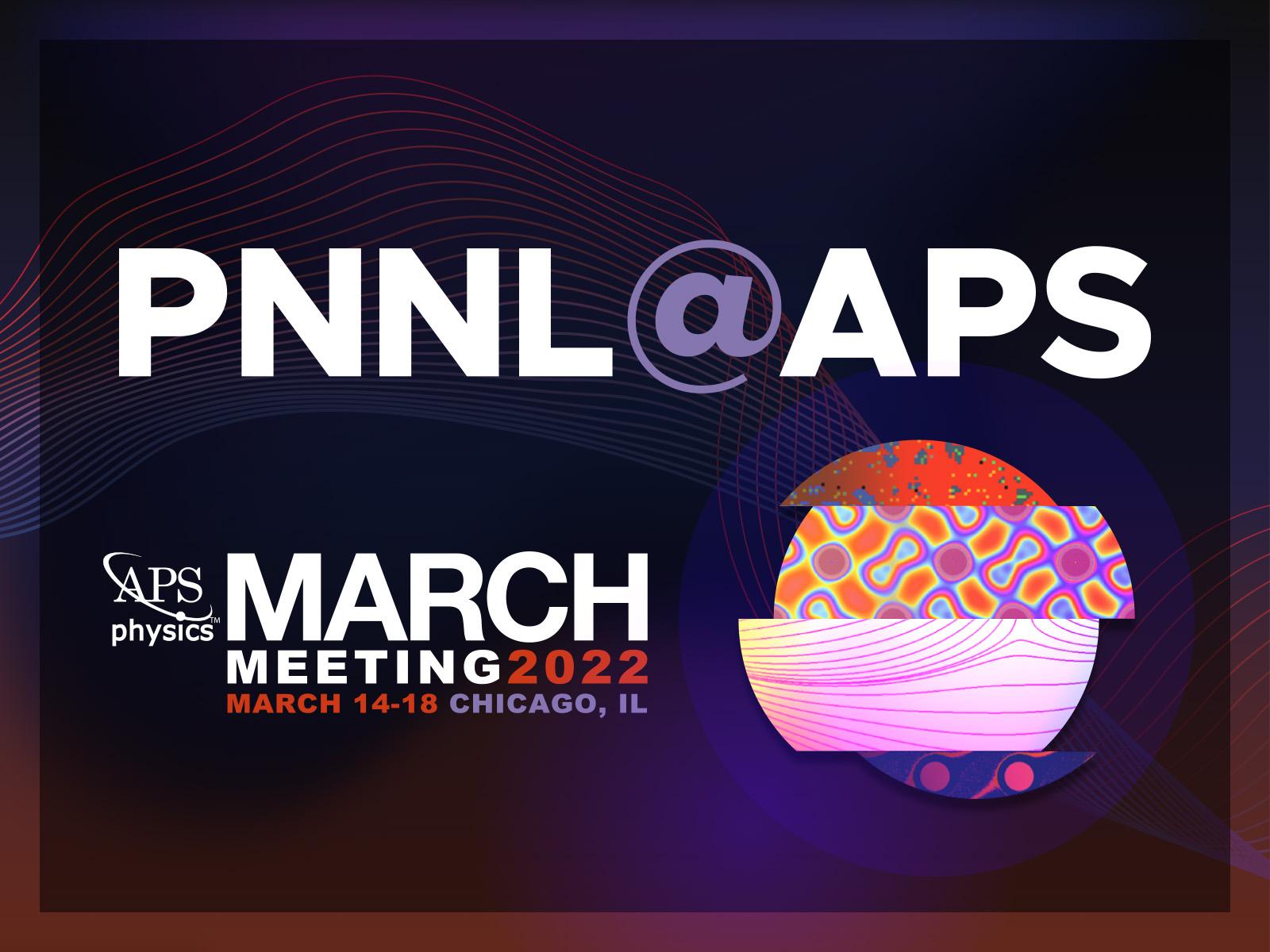
Join PNNL at APS March 2022
(Image by American Physical Society and Christopher DeGraaf, Pacific Northwest National Laboratory)
The APS March 2022 conference will feature tutorials, short courses, and presentations. The full program of presentations is planned for March 14–18 in Chicago. Learn more about Pacific Northwest National Laboratory's (PNNL's) presence at the APS March Meeting below.
If you’re a scientist interested in working at PNNL, check out our current openings:
PNNL Speakers and Presentations
Featured Talk: MONDAY, March 14, 2022
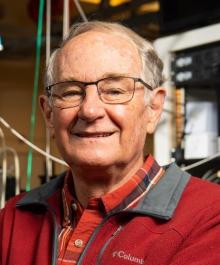
Mapping hidden space-charge distributions across crystalline metal oxide/group IV semiconductor interfaces
9:30 a.m. – 9:42 a.m. PST/11:30 a.m. – 11:42 a.m. CST
Scientists at PNNL have uncovered new properties in a semiconductor material using a powerful, unconventional technique. Scott Chambers, a materials scientist at PNNL, will report the team’s discovery at this meeting. See details about this talk in Session B71.1 below. READ THE NEWS RELEASE.
Monday, March 14, 2022

Polynomial Depth Quantum Circuits for Time Evolution of Heisenberg Models Using the Yang-Baxter Equation
Session A01: Towards Discovery in Chemistry with Quantum Computers I
8:48 a.m. – 9:00 a.m. PST/10:48 a.m. – 11:00 a.m. CST
PNNL Authors: Bo Peng, Niri Govind
Summary: Quantum time dynamics (QTD) is considered to be a promising problem for near-term quantum computers to solve. However, quantum circuits for QTD grow with increasing time simulation. This study focuses on simulating the time dynamics of 1-D integrable spin chains with nearest-neighbor interactions. We show how the Yang-Baxter equation can be exploited to compress a quantum circuit. READ MORE.

Mapping hidden space-charge distributions across crystalline metal oxide/group IV semiconductor interfaces
Session B71.1: Engineering and Synthesis of Complex Oxide Heterostructures
9:30 a.m. – 9:42 a.m. PST/11:30 a.m. – 11:42 a.m. CST
PNNL Authors: Scott Chambers, Steven Spurgeon, Bethany Matthews, Mark Bowden, Zihua Zhu, Peter Sushko
Summary: Dopant profiles in semiconducting heterojunctions can have major effects on band energies, which in turn drive transport properties. Here we use core-level photoelectron line shapes excited with hard x-rays to extract information about electric fields resulting from internal charge transfer in epitaxial La-doped Sr(Ti,Zr)O3/Ge(001) heterostructures. READ MORE.

Tuning band alignment at a semiconductor-crystalline oxide heterojunction via electrostatic modulation of the interfacial dipole
Session B71.2: Engineering and Synthesis of Complex Oxide Heterostructures
9:42 a.m. – 9:54 a.m. PST/11:42 a.m. – 11:54 a.m. CST
PNNL Authors: Bethany Matthews, Zihua Zhu, Steven Spurgeon, Scott Chambers, Peter Sushko
Summary: Charge transfer across semiconductor heterojunctions and the electric fields that arise therefrom underpin the functionality of virtually all device technologies. In conventional semiconducting heterojunctions, band alignments are rigid under doping and charge transfer. In contrast, we demonstrate that band alignment can be altered through charge transfer at hybrid heterojunctions composed of crystalline oxides and semiconductors. READ MORE.
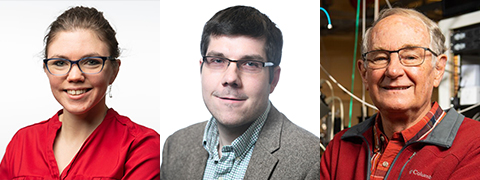
Hybrid Molecular Beam Epitaxy of Germanium-Containing Oxides
Session B71.4: Engineering and Synthesis of Complex Oxide Heterostructures
10:06 a.m. – 10:18 a.m. PST/12:06 p.m. – 12:18 p.m. CST
PNNL Authors: Bethany Matthews, Steven Spurgeon, Scott Chambers
Summary: Wide bandgap and high carrier mobility are two important material characteristics for transparent conducting oxides and power device applications. According to ab initio calculations, germanium-containing oxides such as SrGeO3 and rutile GeO2 meet both these requirements. In this talk, we present the first demonstration of hybrid molecular beam epitaxy growth of Ge-based oxides including perovskite SrGe1-xSnxO3 and rutile Ge1-xSnxO2. READ MORE.
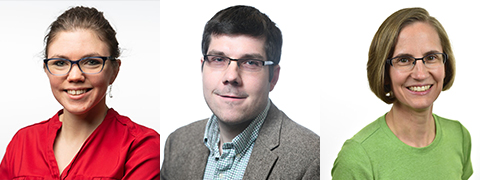
Growth and Characterization of Stoichiometry-Varied MnxCo3-xO4 Manganese-Cobalt Spinel Thin Films
Session D66: Adsorption, Growth and Catalysis
2:00 p.m. – 2:12 p.m. PST/4:00 p.m. – 4:12 p.m. CST
PNNL Authors: Bethany Matthews, Steven Spurgeon, Tiffany Kaspar
Summary: The cobalt-manganese spinels MnCo2O4 and CoMn2O4 have shown strong catalysis behavior through oxygen reduction reactivity (ORR). These materials can perform ORR at levels on par with ubiquitous but expensive materials such as platinum. Despite their impressive catalytic properties, little has been done in the way of thin film characterization of these materials. READ MORE.
Tuesday, March 15, 2022
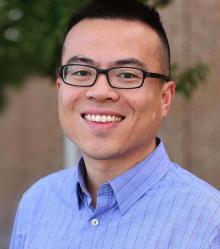
State preparation and evolution in quantum computing: a perspective from Hamiltonian moments
Session F02: Towards Discovery in Chemistry with Quantum Computers III
6:36 a.m. – 6:48 a.m. PST/8:36 a.m. – 8:48 a.m. CST
PNNL Author: Bo Peng
Summary: The non-negligible gate error present on noisy intermediate-scale quantum devices impedes the implementation of conventional quantum algorithms. In this talk, we will briefly introduce quantum algorithms with a focus on the typical ways of computing Hamiltonian moments using quantum hardware and improving the accuracy of the estimated state energies. READ MORE.

Multi-harmonic ElectroThermal Spectroscopy (METS) for a non-invasive and spatially resolved determination of electrochemical processes in an electrochemical cell
Session G31: Instrumentation 1: Gas, NMR, Materials
10:42 a.m. – 10:54 a.m. PST/12:42 p.m. – 12:54 p.m. CST
PNNL Authors: Vijayakumar Murugesan, Ruozhu Feng
Summary: Lock-in detection techniques like the 3-omega method have been used for determining spatially resolved thermal properties. In this work, we present a lock-in detection technique based on thermal signatures of electrochemical processes. The processes are differentiated from the harmonics and the phase of the heat generated when an alternating current is passed through the cell. READ MORE.
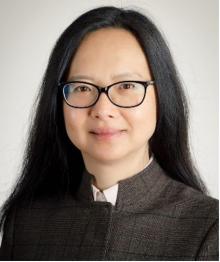
The Frontiers in Science (FIS) Program: promoting STEM graduate enrollment and training the faculty of the future
Session K27: Jonathan F. Reichert and Barbara Wolff-Reichert Award for Excellence in Advanced Laboratory Instruction
2:48 p.m. – 3:00 p.m. PST/4:48 p.m. – 5:00 p.m. CST
PNNL Author: Margaret S. Cheung
Summary: Significant demographic disparities exist in students pursuing STEM careers, due in part to the differences in support and guidance undergraduates receive when considering future careers. In this talk, we describe a 10-week paid summer research opportunity for undergraduates: the Frontiers in Science program. READ MORE.
Wednesday, March 16, 2022
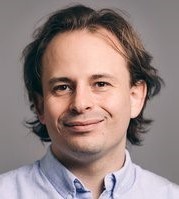
Nearly Optimal Quantum Algorithm for Estimating Multiple Expectation Values
Session M40: Quantum Algorithms
6:36 a.m. – 6:48 a.m. PST/8:36 a.m. – 8:48 a.m. CST
PNNL Authors: Nathan Wiebe (University of Toronto Joint Appointee)
Summary: Many quantum algorithms involve the evaluation of expectation values with respect to some pure state. Optimal strategies for estimating a single expectation value to within a precision ε are known, requiring a number of calls to a state preparation oracle proportional to ε-1 in the asymptotic limit. In this paper, we address the task of evaluating the expectation values of M different observables with the same ε-1 scaling in the desired precision. READ MORE.
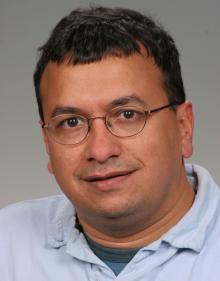
An optimal tuning perspective of range-separated double-hybrid functionals
Session N01: Density Functional Theory and Beyond IV
10:06 a.m. – 10:18 a.m. PST/12:06 p.m. – 12:18 p.m. CST
PNNL Author: Niri Govind
Summary: We study the tuning of the free parameters of range-separated double hybrid functionals based on the exact conditions of piecewise linearity and spin constancy. We find that introducing range-separation in both exchange and correlation allows for the minimization of both fractional charge and fractional spin errors for singlet atoms. READ MORE.
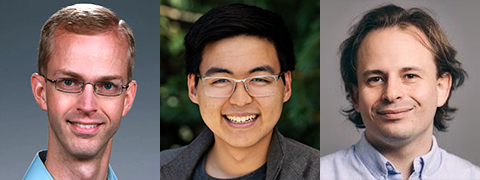
AKLT ground state in "Bosonic Qiskit"
Session N34: CV Quantum Computation and Simulation I
12:06 p.m. – 12:18 p.m. PST/2:06 p.m. – 2:18 p.m. CST
PNNL Authors: Timothy Stavenger, Christopher Kang, Nathan Wiebe
Summary: A collaboration within the Co-design Center for Quantum Advantage is currently building an instruction set architecture for hybrid qubit/oscillator circuit Quantum Electrodyanmics hardware using Qiskit, the IBM open-source software development kit. Qiskit has been designed to operate on two-level systems. The aim is to create a branch of Qiskit called "Bosonic Qiskit." READ MORE.
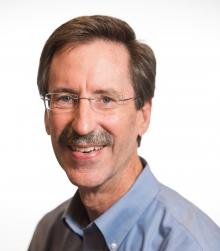
Learning Regulation from the Ground Up: Combining Natural Selection, Thermodynamics, and Data
Session Q04: Non-equilibrium Thermodynamics: From Chemical Reaction Networks to Natural Selection II
1:48 p.m. – 2:00 p.m. PST/3:48 p.m. – 4:00 p.m. CST
PNNL Author: William R. Cannon
Summary: Modeling cells has many challenges: data is sparse, noisy, and measured over a population instead of over individuals or cell compartments. Moreover, the parameters needed to build kinetic and thermodynamic models are extremely labor intensive to obtain, which makes building a physics-based model very difficult. We address this challenge by taking advantage of the fact that natural selection selects the most optimal individuals out of all solutions. READ MORE.
Thursday, March 17, 2022

Substrate and Intermolecular Interactions Influence the Properties of Supported Polyoxometalate Spin Qubits
Session S66: Functional Surfaces, Coatings and Interfaces
6:36 a.m. – 6:48 a.m. PST/8:36 a.m. – 8:48 a.m. CST
PNNL Author: Grant Johnson
Summary: Polyoxometalates (POMs) with localized spins have potential as molecular qubits for quantum computing. POMs may incorporate magnetic atoms such as V into their structures, producing novel molecules with promising electro/magneto-optical properties. Nevertheless, for eventual applications, molecular qubits need to be arranged in optically addressable arrays, which imposes unavoidable interactions with underlying supports and adjacent POMs. READ MORE.
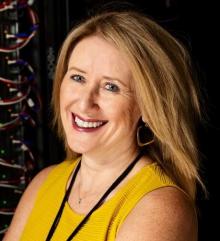
Quantum Now: Minimalist Methods for Quantum Calculations and Experiential Learning
Session T27: Teaching Quantum At All Levels
11:06 a.m. – 11:18 a.m. PST/1:06 p.m. – 1:18 p.m. CST
PNNL Author: Vanda Glezakou
Summary: As an addendum to the “physics first” paradigm for early science education, we describe a course-based computational learning protocol that allows high-school students, undergraduates, graduates, K-12 teachers, and seasoned researchers to move from addition and multiplication to fixed-basis quantum calculation without exposure to calculus and with minimal trigonometry. READ MORE.

High-Speed Rotational Diamond Anvil Cell (HS-RDAC) for Shear Deformation Study
Session W24: Matter at Extreme Conditions: New Experimental Developments
2:48 p.m. – 3:00 p.m. PST/4:48 p.m. – 5:00 p.m. CST
PNNL Authors: Arun Devaraj, Tingkun Liu
Summary: A first-of-its-kind, high-speed rotational diamond anvil cell has been tested at HPCAT beamlines. The device basically consists of a support diamond anvil and an opposing high-speed rotating diamond anvil, the rotation speed of which can be adjusted up to a kilo-rpm level. READ MORE.
Friday, March 18, 2022

Understanding protein complex assembly through grand canonical maximum entropy modeling
Session Y31: Biological Physics
6:00 a.m. – 6:12 a.m. PST/8:00 a.m. – 8:12 a.m. CST
PNNL Author: Margaret S. Cheung
Summary: Inside a cell, heterotypic proteins assemble into inhomogeneous, crowded systems where the abundance of these proteins varies with cell types. While some protein complexes form putative structures that can be visualized with imaging, there are far more protein complexes that are yet to be solved because of their dynamic associations with one another. READ MORE.
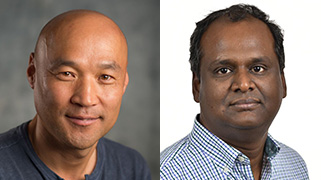
Probing Ion-transport mechansim in lithium based antiperovskite solid-electrolytes
Session Y10: Energy Storage
7:00 a.m. – 7:12 a.m. PST/9:00 a.m. – 9:12 a.m. CST
PNNL Authors: Kee Sung Han, Vijayakumar Murugesan
Summary: Solid electrolytes are enablers for all-solid-state batteries that incorporate Li-metal anodes, promising cell-level energy densities up to 500 Wh/kg and providing a paradigm change to next-generation battery technology. The significant metrics for a successful solid electrolyte candidate include high ionic conductivity (> 10-4 S cm-1), electronic insulation (< 10-10 S cm-1), electrochemical stability, and ease in synthesis and processing. READ MORE.
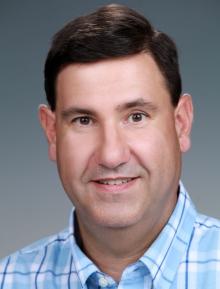
Theoretical study of tritium diffusion and formation from bulk and defective surface of γ-LiAlO2 pellets
Session Z10: Advances in Energy Storage Materials and Devices for Energy Applications
9:54 a.m. – 10:06 a.m. PST/11:54 a.m. – 12:06 p.m. CST
PNNL Author: David Senor
Summary: In tritium-producing burnable absorber rods, γ-LiAlO2 is used in the form of an annular ceramic pellet enriched with the 6Li isotope. When irradiated in a pressurized water reactor, the 6Li pellets absorb neutrons and produce tritium (3H) through 6Li + n à 3H + α. The 3H chemically reacts with the metal getter where it is captured and leads to formation of a metal hydride. READ MORE.
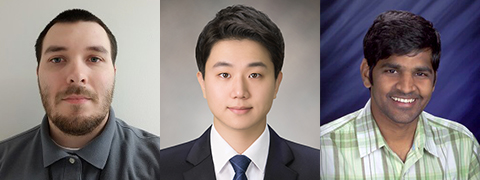
Computation-informed optimization of Ni(PyC)2 functionalization for noble gas separations
Session Z02: Nanomaterials and Applications
10:06 a.m. – 10:18 a.m. PST/12:06 p.m. – 12:18 p.m. CST
PNNL Authors: Alexander Robinson, Min-Bum Kim, Praveen K. Thallapally
Summary: Metal-organic frameworks (MOFs) are promising nanoporous materials for the adsorptive capture and separation of noble gases at room temperature. Among the numerous MOFs synthesized and tested for noble gas separations, Ni(PyC)2 (PyC = pyridine-4-carboxylate) exhibits the highest xenon/krypton selectivity at room temperature. READ MORE.

Cleaning up the Legacy of Nuclear Weapons Production: Progress and Challenges at the Hanford Site
Session Z13: Radioactive Nuclear Waste - A Problem Not Going Away
10:06 a.m. – 10:42 a.m. PST/12:06 p.m. – 12:42 p.m. CST
PNNL Author: Thomas Brouns
Summary: The Hanford Site in southeast Washington State was developed out of the Manhattan Project in the early 1940s and ultimately produced two-thirds of the United States' plutonium for nuclear weapons. The nuclear materials derived from Hanford’s nuclear reactors and chemical processing plants have also generated large volumes of chemical and radioactive wastes. Planned and unplanned releases of waste into the environment have resulted in contamination of soil and groundwater. READ MORE.
PNNL Organizers
Program Chair for the Division of Biological Physics at APS 2022:
Margaret S. Cheung
________________________________________________
Tuesday, March 15, 2022
Session K04: Non-Equilibrium Thermodynamics: From Chemical Reaction Networks to Natural Selection I
8:00 a.m. – 10:24 a.m. PST/10:00 a.m. – 12:24 p.m. CST
PNNL Chair: William R. Cannon
Talks in this session include:
- Combinatorics in evolution: from rule-based systems to the thermodynamics of selectivities
- Thermally induced habitat for the emergence of life - enrichment of phosphorus, divalent salts and compact oligomer folds
- A robust transition to homochirality in complex chemical reaction networks
- How the drive for survival of the fittest might have arisen from a physico-chemical ratcheting process
- Evolutionary fynamics: a stochastic thermodynamics perspective
- Spatial patterns in winning mediated thermodynamic strategy evolution
- Dynamical mean-field theory: from ecosystems to reaction networks
- It doesn't always pay to be fit: success landscapes
- Dynamics of bacterial replisomes
- Modeling circadian clocks in real environments. READ MORE.
WEDNEsday, March 16, 2022
Session N14: Delbruck Prize Symposium
4:30 a.m. – 7:30 a.m. PST/6:30 a.m. – 9:30 a.m. CST
PNNL Chair: Margaret S. Cheung
Talks in this Delbruck Prize Symposium include:
- Delbruck Prize (2022): resource allocation for bacteria growth: laws and mechanisms
- Optimality and microbial growth strategies
- Precision in protein production: requirements and mechanism
- Esther Hoffman Beller Lectureship (2022): Growth-rate dependent action of cell-wall targeting antibiotics. READ MORE.
Session Q04: Non-Equilibrium Thermodynamics: From Chemical Reaction Networks to Natural Selection II
8:00 a.m. – 10:48 a.m. PST/10:00 a.m. – 12:48 p.m. CST
PNNL Chair: William R. Cannon
Talks in this session include:
- Free energy transduction in chemical reaction networks from enzymes to metabolism
- Performance bounds, trade-offs, and scaling for collective motor-driven transport
- Learning regulation from the ground up: combining natural selection, thermodynamics and data
- Scaling relations of energy dissipation rate in nonequilibrium reaction systems
- Algebra for large macromolecular complexes
- Decomposing the local arrow of time in interacting systems
- Information transmission by heterogeneous cell populations
- Functional universality in slow-growing microbial communities arises from thermodynamic constraints
- Life without oxygen: the energy saving mechanisms of anaerobic gut bacteria
- 3D diffusion in live Escherichia coli cells
- In vitro cell-cycle oscillations exhibit a robust and hysteretic response to changes in cytoplasmic density. READ MORE.